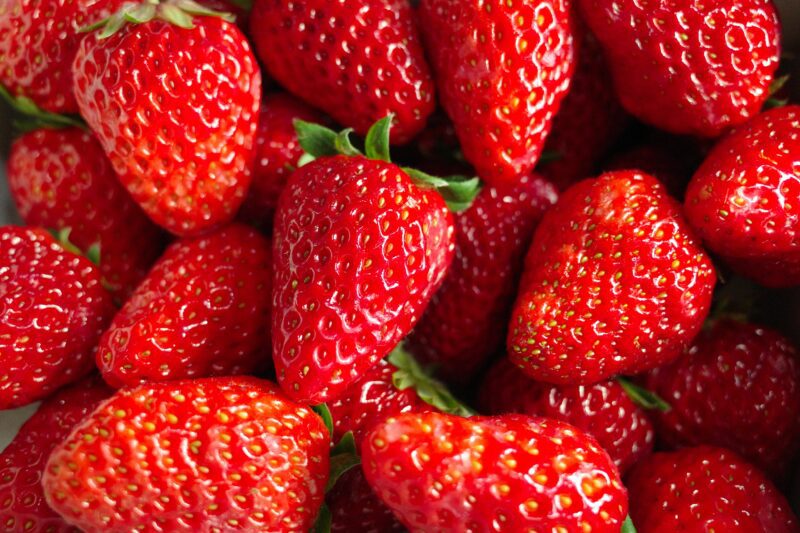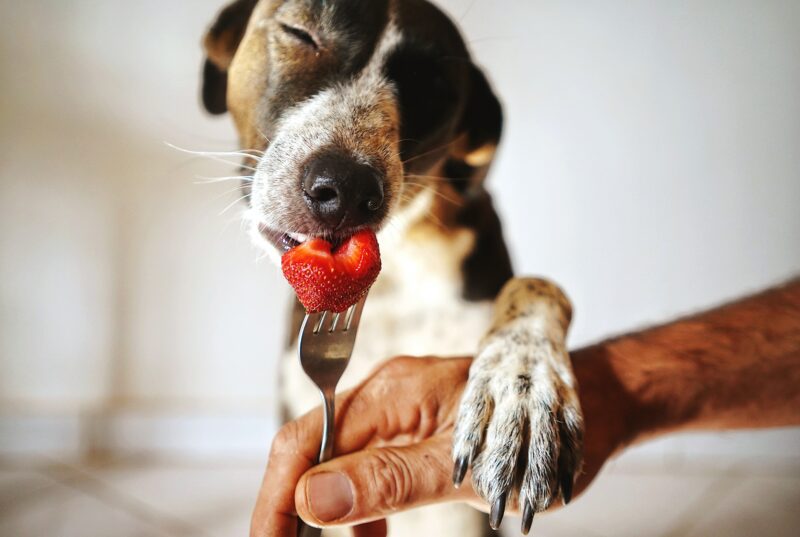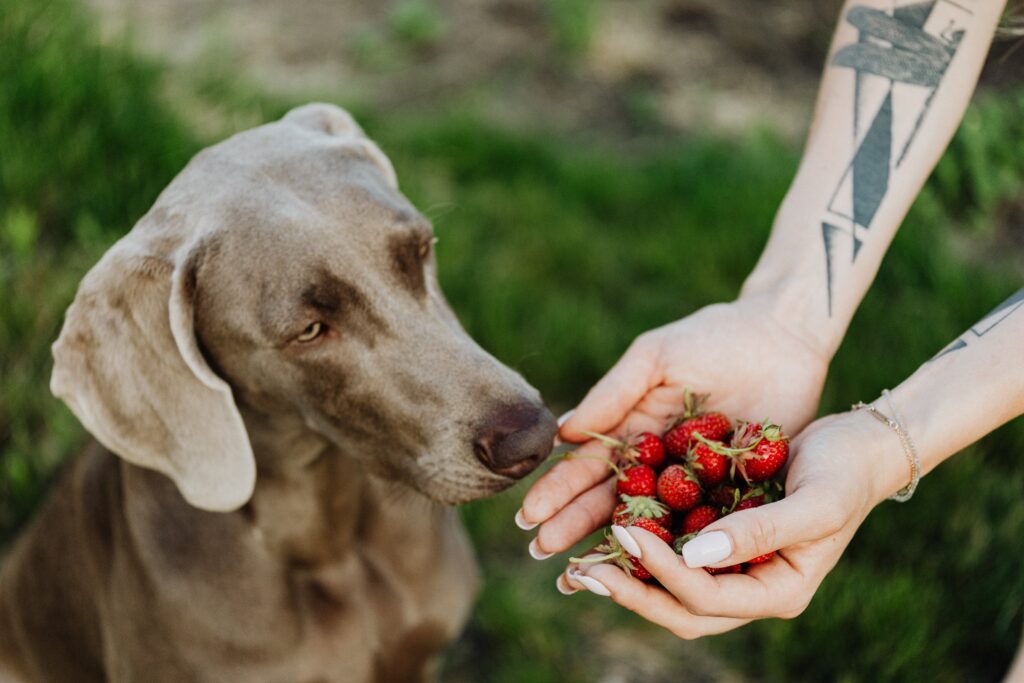As pet owners, we often find ourselves pondering over the nutritional choices we make for our furry friends. One common query that arises is, “Can dogs eat strawberries?” The vibrant red allure of these berries and their inherent sweetness may prompt us to share this delectable treat with our canine companions. In this comprehensive guide, we’ll explore the nutritional benefits, potential risks, and best practices for incorporating strawberries into your dog’s diet.
Section 1: The Nutritional Bonanza of Strawberries
Strawberries are not just a delight for humans; they offer a range of nutrients that can be advantageous for dogs. Understanding the nutritional profile of strawberries is crucial in determining whether they can be a healthy addition to your dog’s diet.
1.1. Rich in Antioxidants:
Strawberries are packed with antioxidants, including vitamin C and various phytonutrients. These compounds play a vital role in neutralizing free radicals and supporting your dog’s immune system.
1.2. Fiber for Digestive Health:
The high fiber content in strawberries can contribute to a healthy digestive system for dogs. Fiber aids in regulating bowel movements, reducing the risk of constipation, and promoting overall gut health.
1.3. Essential Vitamins and Minerals:
Strawberries are a natural source of essential vitamins such as vitamin A, B complex, and minerals like manganese. These nutrients are crucial for various bodily functions, including vision, energy metabolism, and bone health.
Section 2: Can Dogs Safely Consume Strawberries?

The safety of feeding strawberries to dogs lies in understanding the dos and don’ts to ensure a positive and healthy experience for your furry friend.
2.1. Moderation is Key:
Like any treat, moderation is crucial when it comes to offering strawberries to your dog. Treats, including fruits, should constitute no more than 10% of your dog’s daily caloric intake to maintain a well-rounded diet.
2.2. Fresh is Best:
Opt for fresh strawberries over processed forms like jams or jellies. Fresh berries retain their natural nutrients without added sugars and preservatives that can be harmful to dogs.
2.3. Size Matters:
To prevent choking hazards, slice or dice strawberries into small, bite-sized pieces before offering them to your dog. This not only ensures safe consumption but also aids in digestion.
2.4. Check for Allergies:
Introduce strawberries gradually into your dog’s diet to monitor for any potential allergic reactions. Watch for signs such as itching, swelling, or gastrointestinal upset. If any adverse reactions occur, discontinue feeding strawberries and consult your veterinarian.
Section 3: Potential Risks and Considerations
While strawberries are generally considered safe for dogs, it’s essential to be aware of potential risks and individual considerations for your pet.
3.1. Watch for Excessive Sugar Intake:
While strawberries are naturally sweet, they also contain natural sugars. Be mindful of your dog’s overall diet to avoid excessive calorie and sugar consumption, which could contribute to weight gain and other health issues.
3.2. Special Considerations for Diabetic Dogs:
If your dog has diabetes or is predisposed to the condition, consult with your veterinarian before introducing strawberries into their diet. The natural sugars in strawberries may impact blood sugar levels.
3.3. Potential Gastrointestinal Upset:
Some dogs may experience digestive upset, such as diarrhea, when introduced to new foods. Start with small amounts of strawberries and observe your dog’s response before gradually increasing the serving size.
Section 4: Creative Ways to Include Strawberries in Your Dog’s Diet

Now that we’ve established the safety guidelines, let’s explore some creative and healthy ways to incorporate strawberries into your dog’s diet, turning this delectable fruit into a delightful treat.
4.1. Frozen Strawberry Popsicles:
Create refreshing summer treats by freezing strawberry slices. The cool temperature provides a soothing sensation, making it a pawfect choice for warmer days.
4.2. Strawberry and Yogurt Delight:
Combine strawberries with dog-friendly yogurt for a tasty and nutritious treat. The combination not only adds flavor but also introduces beneficial probiotics.
4.3. Homemade Strawberry Dog Biscuits:
Incorporate mashed strawberries into a mixture of dog-safe ingredients to create homemade biscuits. This allows you to control the ingredients and avoid unnecessary additives.
4.4. Strawberry Meal Topper:
Enhance your dog’s regular meals by adding small, mashed amounts of strawberries as a flavorful topper. This adds variety to their diet while providing the nutritional benefits of strawberries.
Conclusion:
In the delightful world of canine nutrition, strawberries emerge as a healthy and tasty treat for dogs when offered responsibly. By understanding the nutritional benefits, practicing moderation, and being attentive to potential risks, you can confidently share the joy of strawberries with your four-legged friend. As always, consult with your veterinarian before making significant changes to your dog’s diet, ensuring their individual health needs are met. So, embark on the strawberry bliss journey with your canine companion, knowing you’re providing a flavorful and nutritious treat that contributes to their overall well-being.













